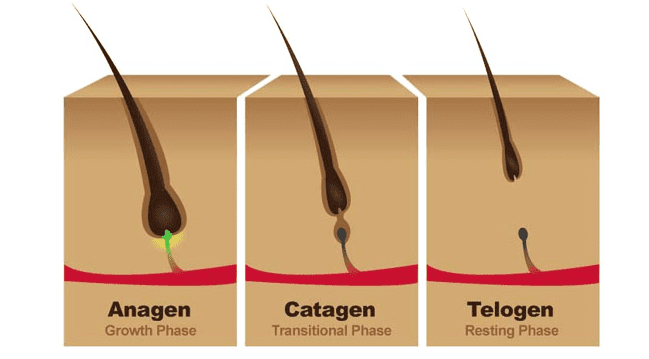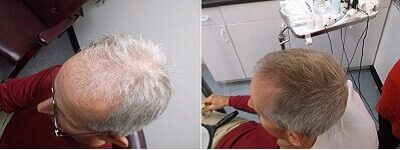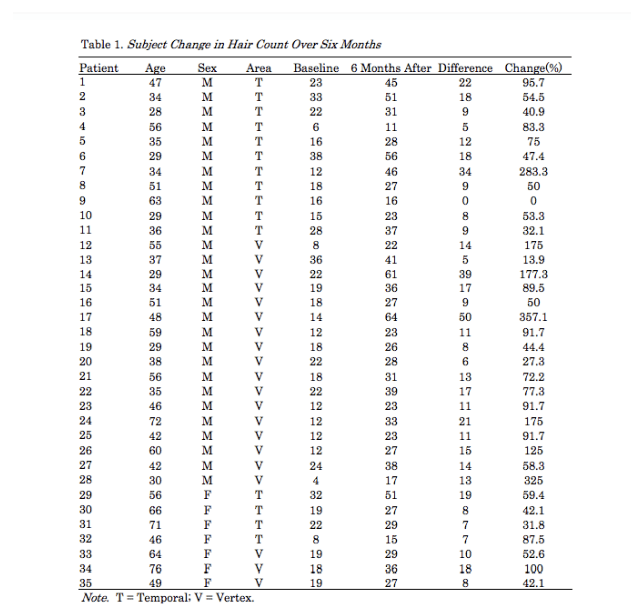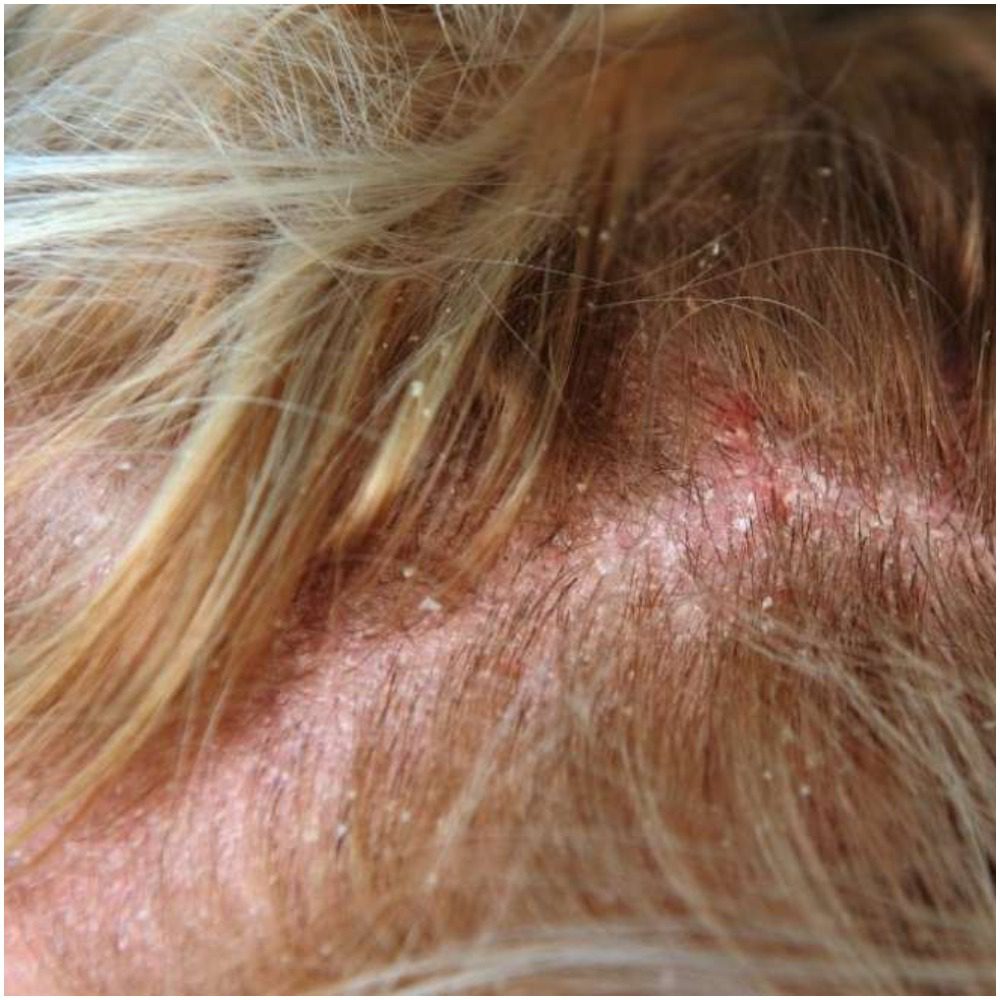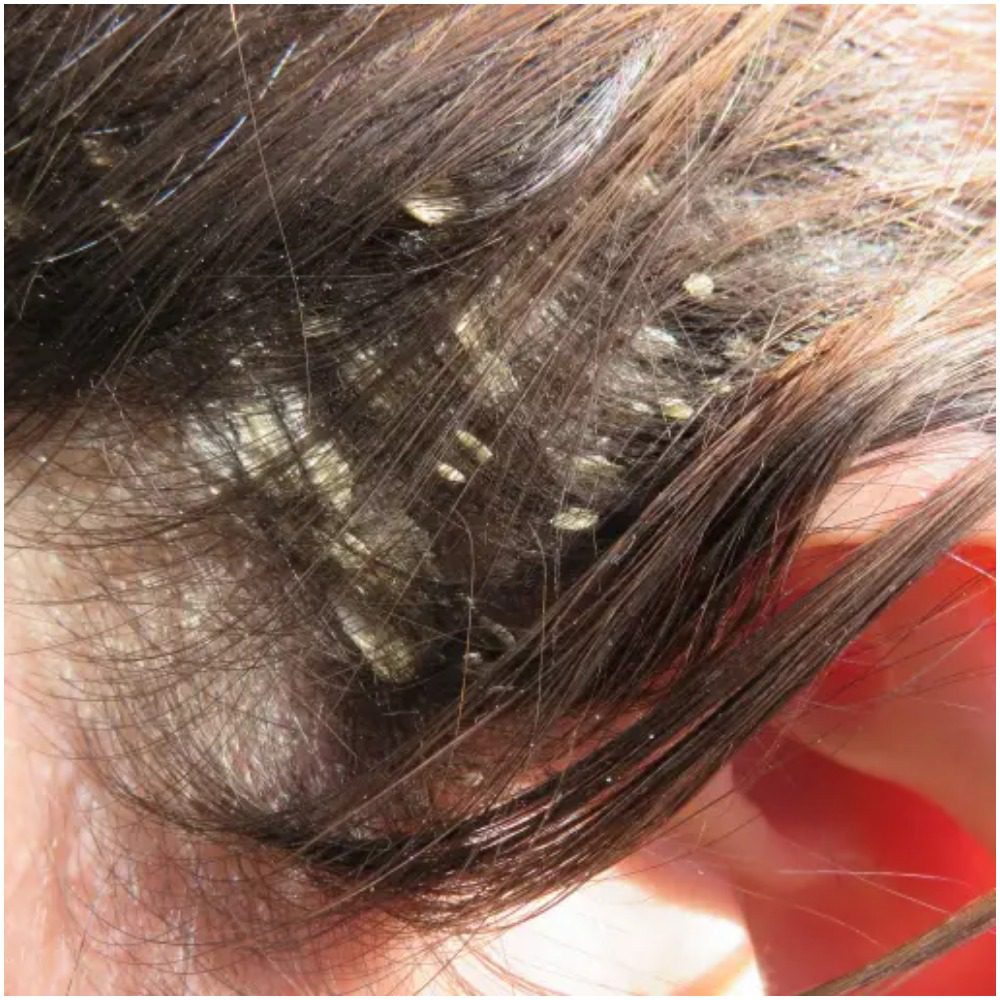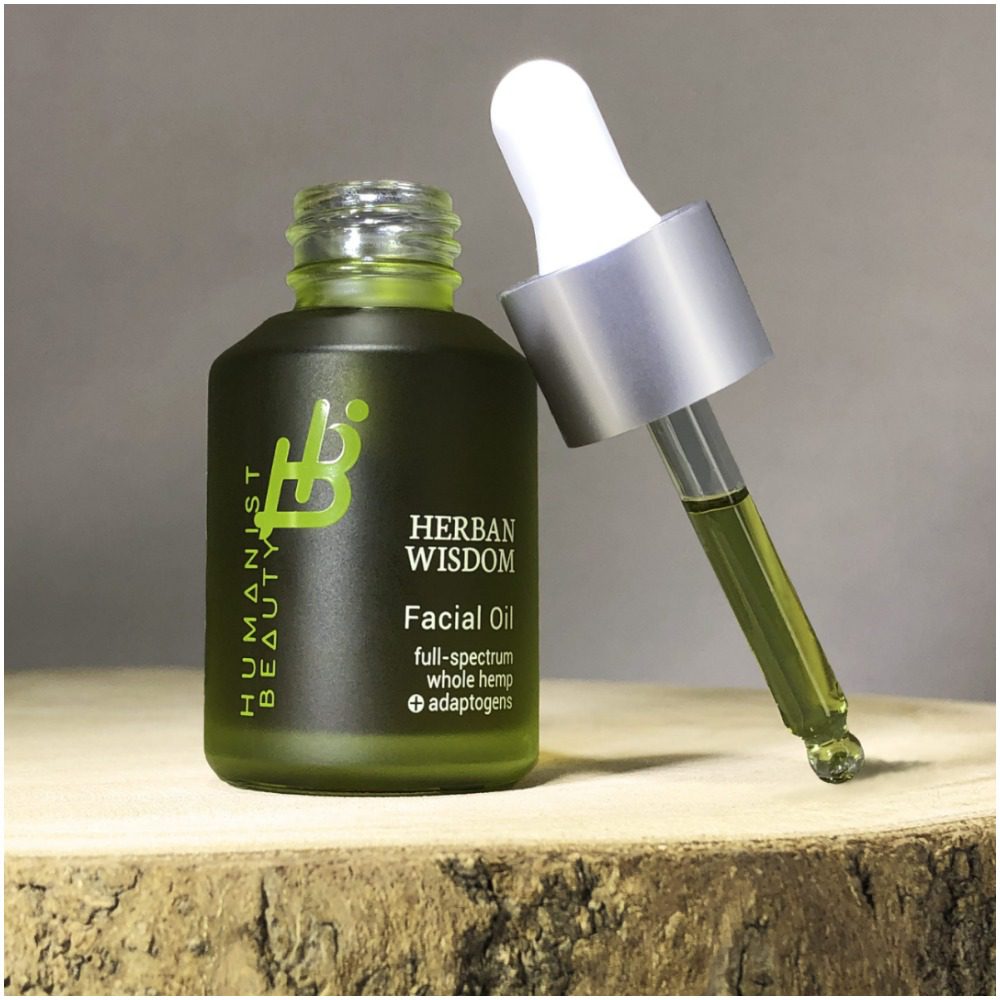Exploring Vitamin E
Vitamin E is a fat-soluble vitamin with several forms; its main role is to act as an antioxidant, scavenging free radicals that can damage cells. Vitamin E came to public attention in the 1980s when scientists began to understand that free radical damage was involved in the early stages of artery-clogging atherosclerosis, and might also contribute to cancer, vision loss, and a host of other chronic conditions. In this blog, we will explore the types of Vitamin E and its antioxidant properties, along with foods rich in Vitamin E and the health benefits they provide in both skincare and through consumption.
What is Vitamin E?
Vitamin E is an antioxidant compound obtained from plant sources in the diet. Vitamin E is not a singular substance; it’s a collective term for a family of eight homologous molecules that are synthesized naturally by plants from homogentisic acid.
Vitamin E is a series of organic compounds consisting of various methylated phenols. These compounds can act as an antioxidant by donating a hydrogen atom to reduce free radicals and have a hydrophobic side chain, which allows for penetration into biological membranes.
The eight homologs are split into two groups: tocopherols and tocotrienols. The tocopherols and tocotrienols have four homologs: alpha, beta, gamma, and delta. Each form has a slightly different biological activity. However, all of these various derivatives are referred to simply as “Vitamin E.”
Historically, only one out of the eight has appeared to have the most nutritional importance: the d-alpha-tocopherol isomer form. The d-alpha-tocopherol isomer form is commonly called Vitamin E on nutrition/supplement labels and is also the only form that can be referred to as the RDA, or Recommended Daily Allowance, for Vitamin E.
The alpha form of tocopherol was originally designated d-alpha-tocopherol on the basis of its optical activity. This means that you can “see” more of this specific compound in your body’s chemical signature. It makes up about 90% of the tocopherol found in humans. Even in your blood plasma, around 83% of the Vitamin E found is d-alpha-tocopherol.
It’s been found that long-term supplementation with just a d-alpha-tocopherol Vitamin E supplement results in blood plasma levels of d-gamma-tocopherols being lowered by 30 to 50%. Since your body still needs this other form, some researchers now recommend to select one with mixed tocopherols.1
Types of Vitamin E
Commercially available sources of Vitamin E can be classified into several distinct categories or types, such as 2, 3:
Natural Vitamin E
This is what most people refer to as Vitamin E; it’s the non-esterified form of d-alpha-tocopherol and occurs in nature, primarily in vegetable oils like soy and sunflower oil.
Semi-Synthetic, Esters
Manufacturers commonly convert the phenol form of the vitamin, with a free hydroxyl group, to esters, using acetic or succinic acid. An ester is a salt formed by a carboxylic acid and an alcohol (tocopherol is the alcohol in this case). These esters are more stable as they are less susceptible to oxidation during storage. In their stored form, they are not classified as antioxidants.
You have to consume these ester forms to “activate” them and unlock their antioxidant properties. Your gut produces an enzyme called esterase that de-esterfies the compound and allows your body to absorb the compound as free tocopherol. Several studies indicate the rate of absorption of these forms of tocopheryl esters and free tocopherol have similar bioavailability.
Alpha-tocopherol
Current literature suggests the primary role in the body of Vitamin E is to function as a major lipid antioxidant for free radicals formed from normal cellular metabolism. Free radicals are destructive to the cell membrane and other body components.
Vitamin E acts as an antioxidant, a molecule capable of inhibiting the oxidation of other molecules, which makes the free radicals unable to damage your cells. Other antioxidants, such as Vitamin C, are capable of regenerating the antioxidant capacity of alpha-tocopherol. Additionally, alpha-tocopherol also protects the fats in low-density lipoproteins (LDL) from oxidation, possibly reducing risk of cardiovascular disease in the process.
Gamma-Tocopherol
Gamma-tocopherol is the major form of Vitamin E ingested in the U.S. diet. It was previously assumed that this form was not important as the body naturally has much higher concentrations of the alpha form. The blood levels of gamma-tocopherol are generally 10-times lower than those of alpha-tocopherol.
However, more recent studies suggest that gamma-tocopherol picks up the slack left by the alpha form. It appears to scavenge different types of free radicals which can damage proteins, lipids, and even your DNA.
Additionally, gamma-tocopherol can inhibit inflammation by reducing cyclooxygenase activity. Studies have also shown higher plasma concentrations of gamma-tocopherol are associated with reduced incidences of prostate cancer.
Tocotrienols
Studies on on tocotrienols indicate they may have significant antioxidant and anti-cancer effects. Tocotrienols appear to act on a specific enzyme called HMG-CoA (3-hydroxy-3-methylglutaryl-coenzyme A reductase) that’s involved in cholesterol production in the liver. Tocotrienols suppress the production of this enzyme, which may result in less cholesterol being manufactured by liver cells.
The Benefits of Vitamin E in Skincare
Some potential skin benefits of Vitamin E include:
Vitamin E is Moisturizing
Researchers have found that products containing Vitamin E can very effectively moisturize the skin. A few studies have shown that the topical application of Vitamin E can improve the skin’s water-binding capacity after two to four weeks of use.4,5 The research also found that Vitamin E can be more moisturizing than other common ingredients used in skincare.
Vitamin E Can Help Fight UV-Related Skin Damage
Oregan State University highlights several studies suggesting that Vitamin E could fight skin damage from sun exposure. Though it’s been shown that it’s possible that adding Vitamin E to sunscreen provides some additional skin benefits, it is important to note that Vitamin E itself is not an effective sunscreen.
Multiple studies have found that the combination of Vitamin C and Vitamin E protects the skin against UV damage.6 Human subjects orally co-supplemented with Vitamins C and E show increased Minimal Erythemal Dose (MED), which is a measure of photoprotection from UV light on the skin.7
Vitamin E Can Promote Wound Healing
The author of a review article in the International Wound Journal suggests that Vitamin E can promote wound healing. The theory is that because Vitamin E deficiencies can slow wound healing, a good amount of this nutrient could have the opposite effect.8
Vitamin E Possesses Anti-Inflammatory Properties
Inflammation is the body’s reaction to an injury or infection; it can cause pain, discoloration, and swelling. Many common skin conditions cause inflammation, including acne. A 2020 study reviewed 26 clinical trials and found evidence that Vitamin E can reduce inflammation in adults.9
Vitamin E May Reduce Hyperpigmentation
Dark patches on your skin can be caused by too much melanin, which is triggered by hormones or other causes. Called Melasma, this condition is believed to be treatable through the use of topical Vitamin E. Studies show that hyperpigmentation may be only moderately affected by using topical Vitamin E oil, but the most effective way to use Vitamin E to treat hyperpigmentation is to pair it with Vitamin C.10
Vitamin E May Prevent Aging And Wrinkles
Vitamin E affects blood circulation, which is why many people notice a difference in the firmness and structure of their skin after the topical use of Vitamin E. A 2013 review tells us that Vitamin E and other natural ingredients rich in antioxidants are generally accepted as a treatment for delaying wrinkles due to photoaging.11
Foods Vitamin E Is Found In
Numerous foods provide Vitamin E. Nuts, seeds, and vegetable oils are among the best sources of alpha-tocopherol, and significant amounts are available in green leafy vegetables and fortified cereals.
Here are 10 foods that contain large amounts of Vitamin E:
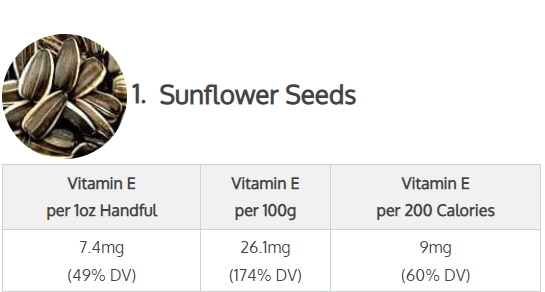


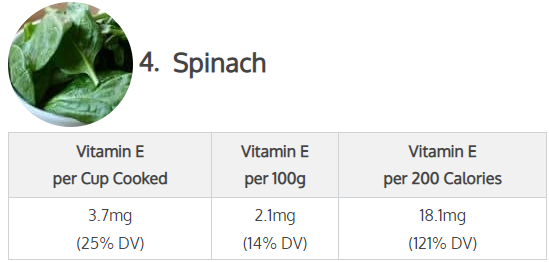
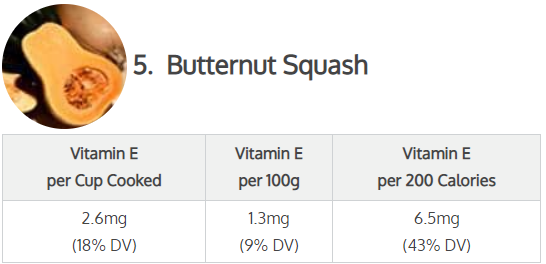
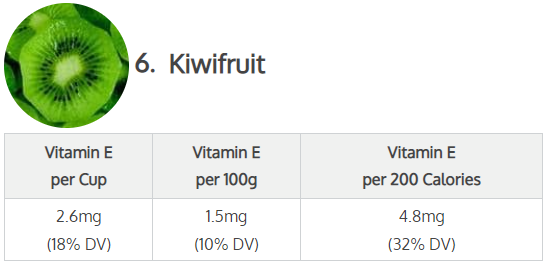

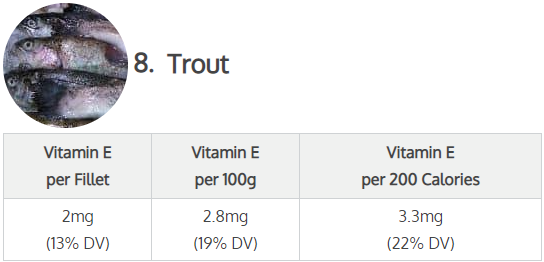
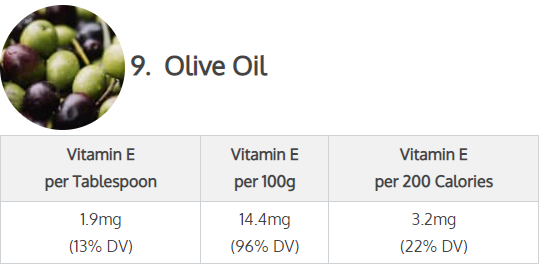
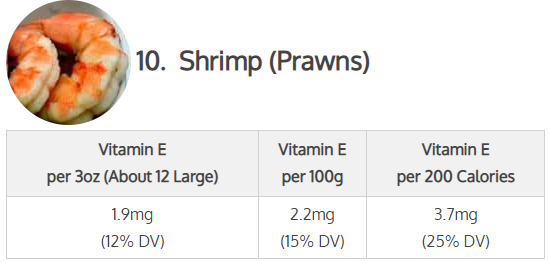
The Health Benefits of Vitamin E
Vitamin E plays many roles in your body. While it’s best known for its antioxidant effects, Vitamin E is also needed for proper immune function and cellular signaling. Here are a few potential health benefits of Vitamin E:
Vitamin E May Reduce Markers Of Oxidative Stress And Improve Antioxidant Defenses
Oxidative stress is a condition that occurs when there’s an imbalance between your body’s antioxidant defenses and the production and accumulation of compounds called reactive oxygen species (ROS). This can lead to cellular damage and increased disease risk.12
Because Vitamin E acts as a powerful antioxidant in the body, studies have shown that supplementing with high doses of it can reduce markers of oxidative stress and boost antioxidant defenses in some populations.13
For example, a 2018 study in 54 people with diabetic nephropathy — kidney damage caused by high blood sugar — found that supplementing with 800 IU of Vitamin E per day for 12 weeks significantly increased levels of glutathione peroxidase (GPx) compared with a placebo.14 GPx is a group of antioxidant enzymes that protect your cells from oxidative damage.
Vitamin E May Reduce Heart Disease Risk Factors
Having high blood pressure and high levels of blood lipids such as LDL cholesterol and triglycerides may increase your risk of developing heart disease. Promisingly, research suggests that Vitamin E supplements may help reduce heart disease risk factors such as these in some people.
A 2019 review of 18 studies found that, compared with placebo treatments, Vitamin E supplements significantly reduced systolic but not diastolic blood pressure — the top and bottom numbers of blood pressure readings, respectively.15
Some studies also show that taking Vitamin E with omega-3 supplements may reduce LDL and triglyceride levels in people with metabolic syndrome — a cluster of conditions, including high blood fat levels, that increases the risk of heart disease and other health conditions.16
Vitamin E May Benefit Those With Nonalcoholic Fatty Liver Disease (NAFLD)
NAFLD includes a number of conditions that cause an accumulation of fat in the liver in people who drink little or no alcohol. According to research findings, Vitamin E may improve some aspects of health in people with NAFLD.
A 2021 review of eight studies found that supplementing with Vitamin E reduced levels of the liver enzymes alanine aminotransferase (ALT) and aspartate aminotransferase (AST), decreased blood lipid levels, and improved liver health in people with NAFLD.17
Elevated AST and ALT levels can indicate liver inflammation and damage in people with NAFLD, so lower levels are favorable.
Vitamin E May Help Manage Dysmenorrhea
Dysmenorrhea is a condition characterized by severe and frequent menstrual pain, such as cramps and pelvic pain. Promisingly, research suggests Vitamin E rich foods and supplements may reduce pain in women with this condition.
In a 2018 study of 100 women with dysmenorrhea, taking 200 IU of Vitamin E daily relieved menstrual pain more than a placebo. The effects were even better when the vitamin was combined with an omega-3 supplement containing 180 mg of EPA and 120 mg of DHA.18
Additionally, a 2021 study showed that supplementing with a combination of Vitamin E and Vitamin C daily for 8 weeks helped reduce the severity of pelvic pain and dysmenorrhea in women with endometriosis.19
Vitamin E’s Other Potential Health Benefits
Vitamin E had also been linked to several other health benefits:
- Vitamin E may improve lung function. Studies have shown that Vitamin E supplements could improve lung function and certain symptoms of asthma in children and adults.20
- Vitamin E may benefit older adults. Because Vitamin E plays an important role in health, such as reducing inflammation and improving immune function, supplements may benefit people who have increased needs or don’t get enough in their diets, such as some older adults. 21
- Vitamin E may benefit cognitive health. Maintaining optimal Vitamin E levels and taking supplements may help protect against cognitive decline, but it’s still unclear whether the supplements benefit people with cognitive conditions like Alzheimer’s disease.22
The Humanist Beauty Herban Wisdom® Facial Oil Features Vitamin E

Tocopherol plus Vitamin E rich plant extracts are integrated into the Humanist Beauty Herban Wisdom® Facial Oil for their antioxidant, anti-inflammatory, photo-protecting, and moisturizing properties. Cranberry, Coriander Seed, Cucumber Seed, and Rosehip Oil combine to defend skin from oxidative damage and bind moisture to the skin.
The Humanist Beauty Herban Wisdom® Facial Oil is non-irritating and well tolerated; it’s suitable for all skin types. It supports overall skin wellness and may assist with its healing.
You can shop the Humanist Beauty Herban Wisdom® Facial Oil here.
References:
https://lpi.oregonstate.edu/mic/vitamins/vitamin-E [1] [3]
https://pubmed.ncbi.nlm.nih.gov/9706379/?dopt=Citation [4]
https://pubmed.ncbi.nlm.nih.gov/17256076/?dopt=Citation [5]
https://pubmed.ncbi.nlm.nih.gov/9448204/?dopt=Citation [6]
https://pubmed.ncbi.nlm.nih.gov/15675947/?dopt=Citation [7]
https://onlinelibrary.wiley.com/doi/full/10.1111/iwj.12295 [8]
https://www.nature.com/articles/s41598-020-73741-6 [9]
https://www.ncbi.nlm.nih.gov/pmc/articles/PMC4976416/ [10]
https://www.ncbi.nlm.nih.gov/pmc/articles/PMC3789494/ [11]
https://www.ncbi.nlm.nih.gov/pmc/articles/PMC5551541/ [12]
https://pubmed.ncbi.nlm.nih.gov/29891745/ [13]
https://pubmed.ncbi.nlm.nih.gov/29891745/ [14]
https://pubmed.ncbi.nlm.nih.gov/30846828/ [15]
https://pubmed.ncbi.nlm.nih.gov/31405672/ [16]
https://pubmed.ncbi.nlm.nih.gov/32810309/ [17]
https://pubmed.ncbi.nlm.nih.gov/29542390/ [18]
https://pubmed.ncbi.nlm.nih.gov/34122682/ [19]
https://pubmed.ncbi.nlm.nih.gov/24338254/ [20]

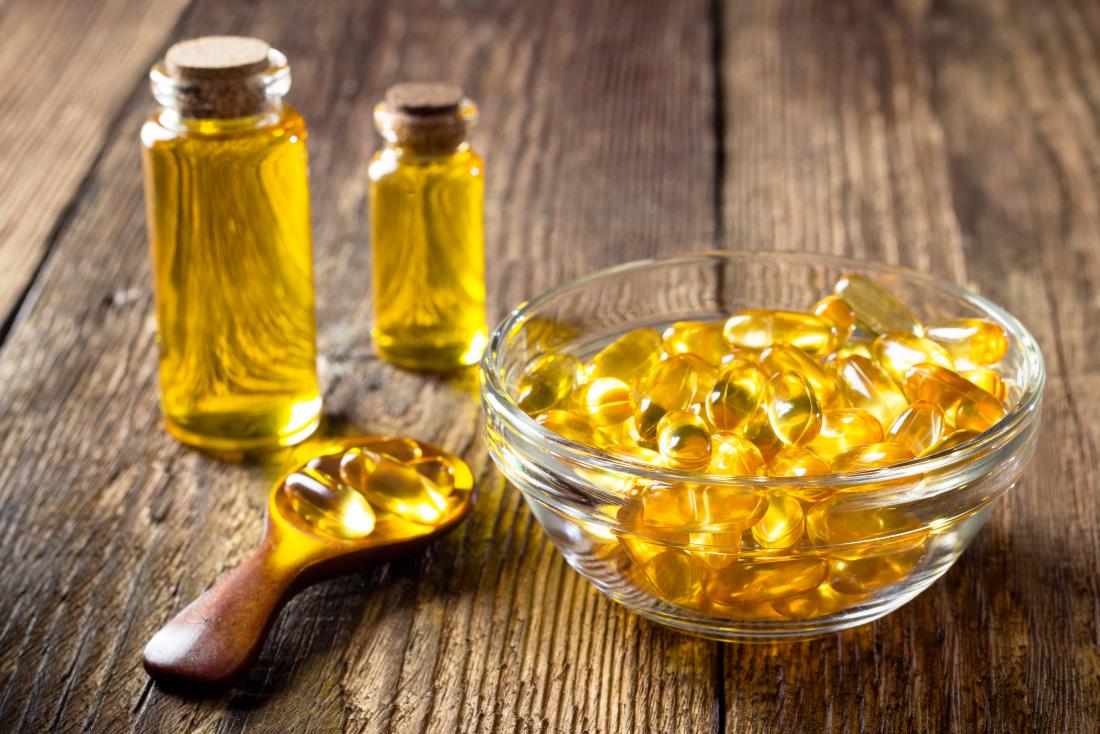

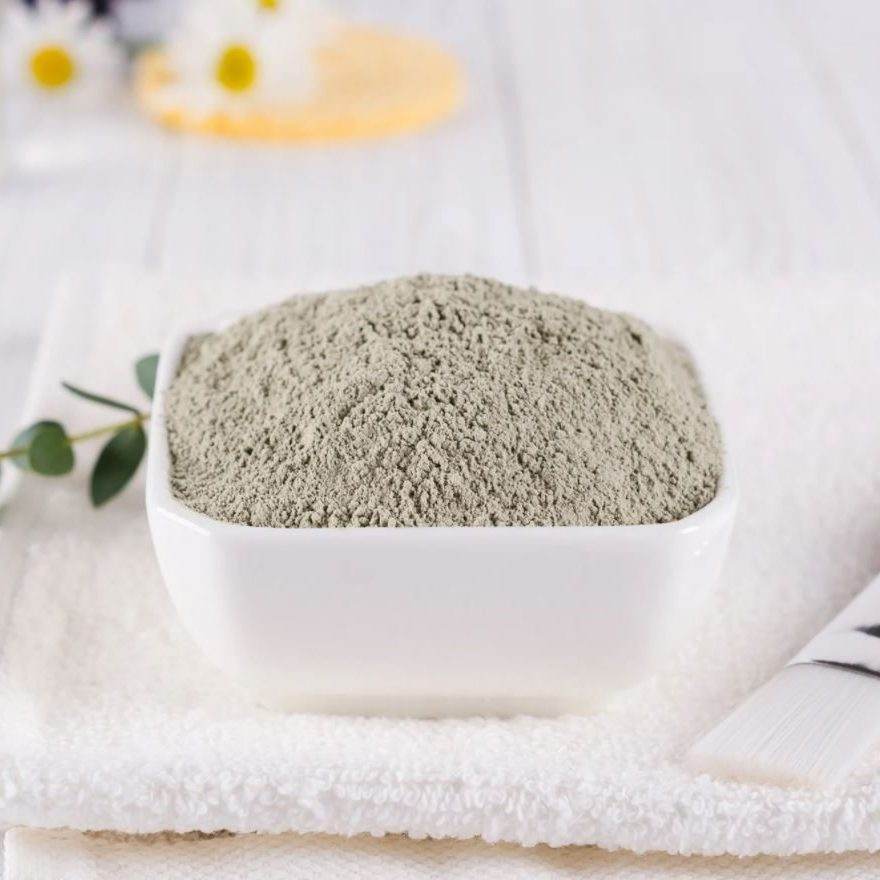
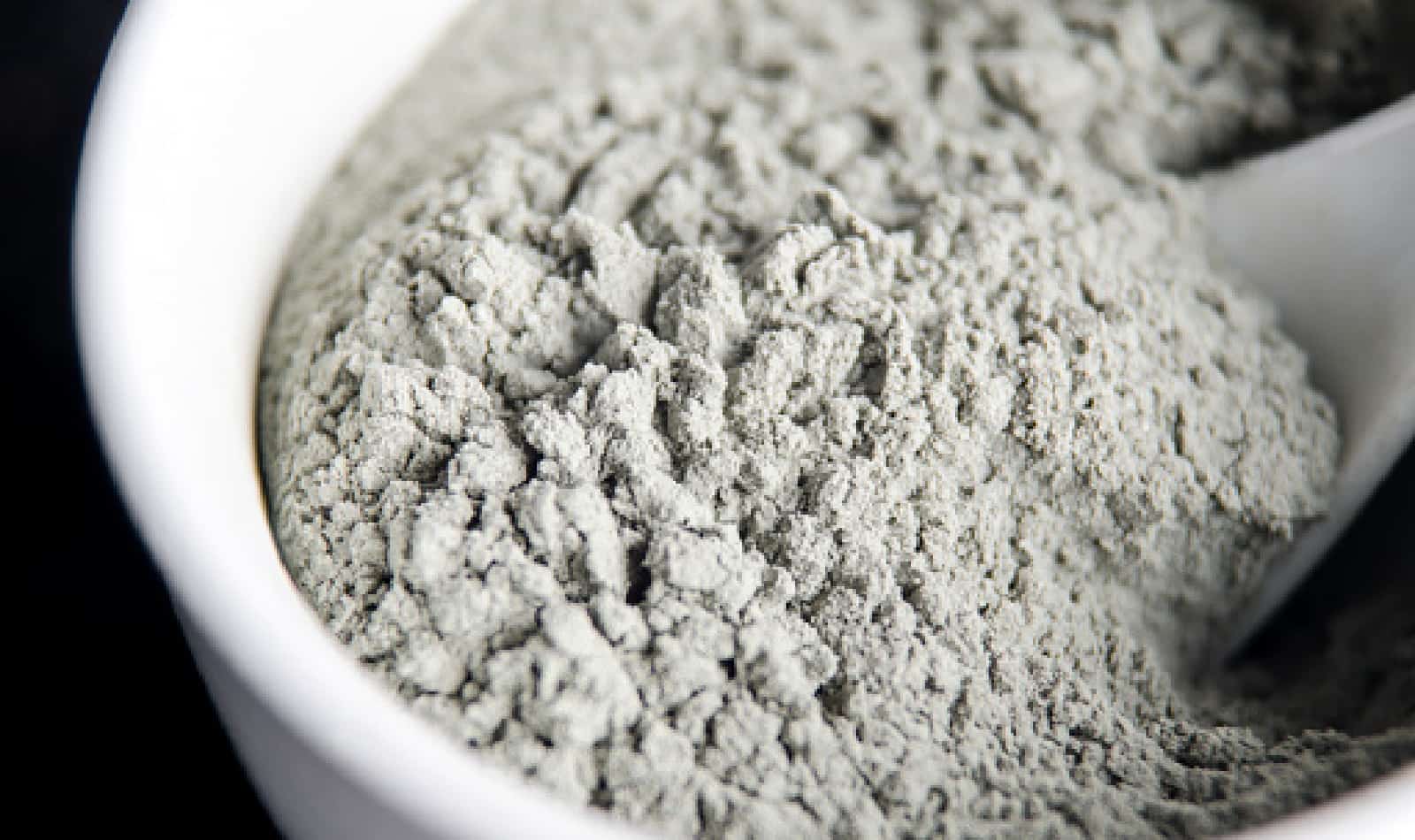
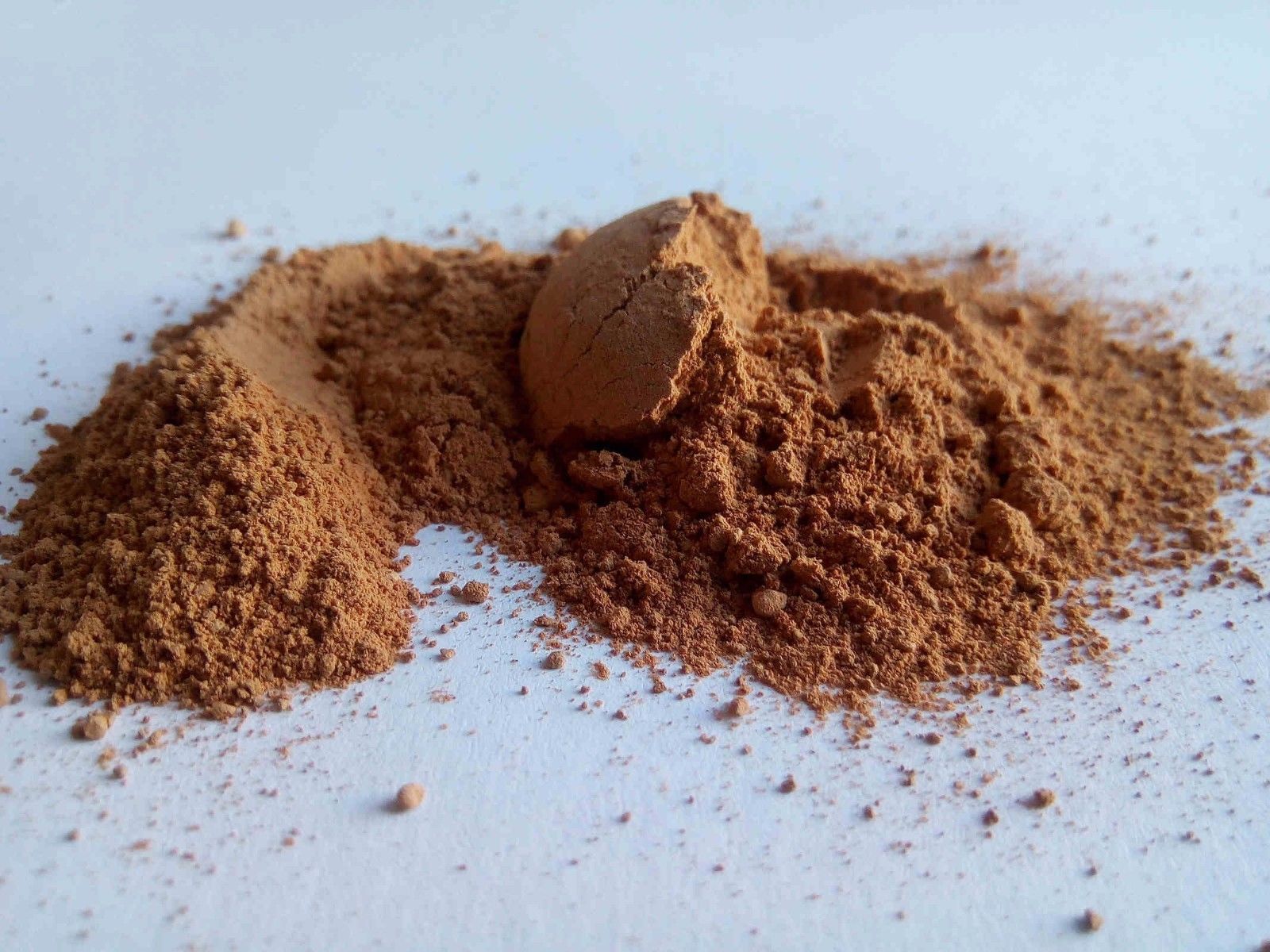
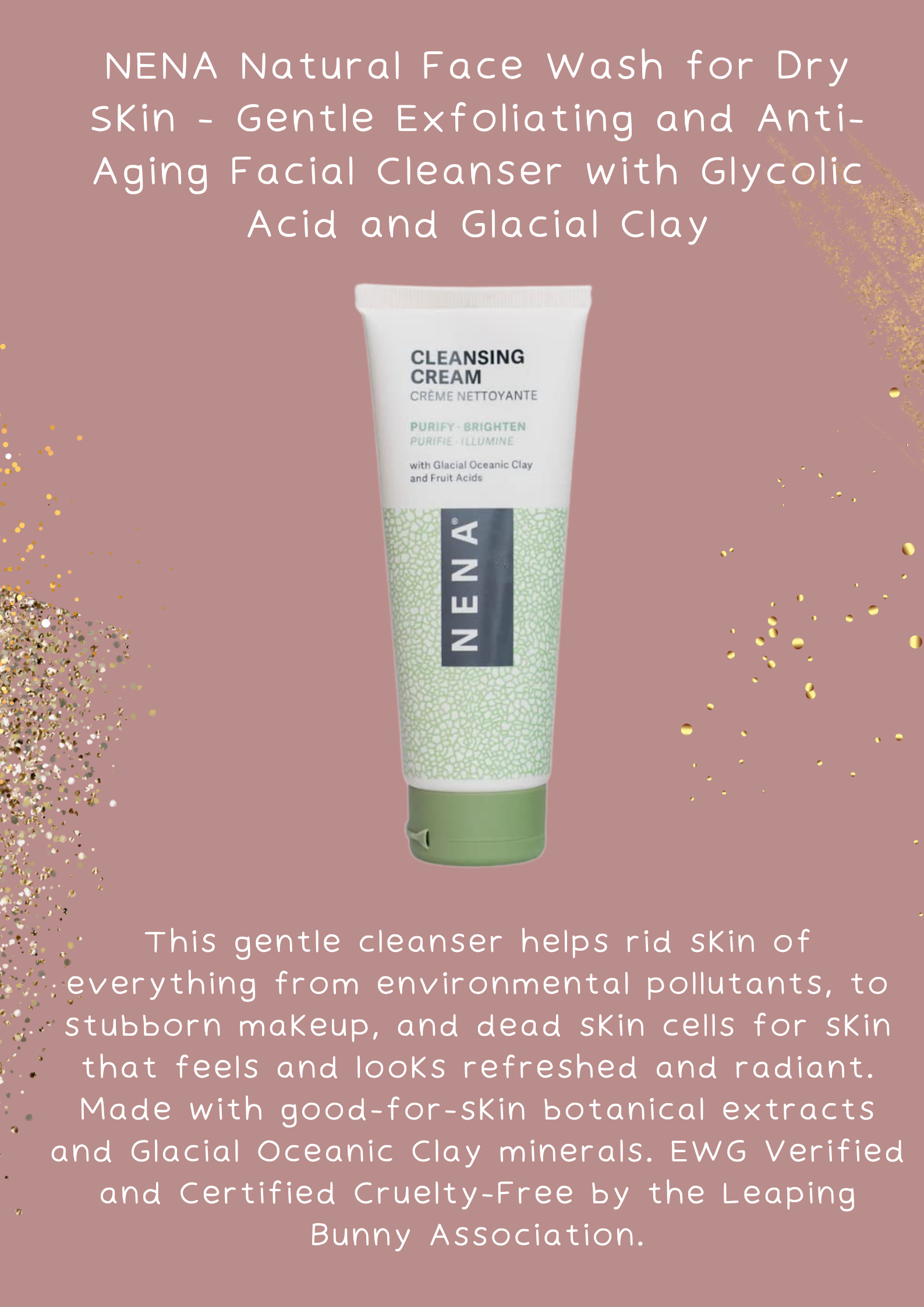
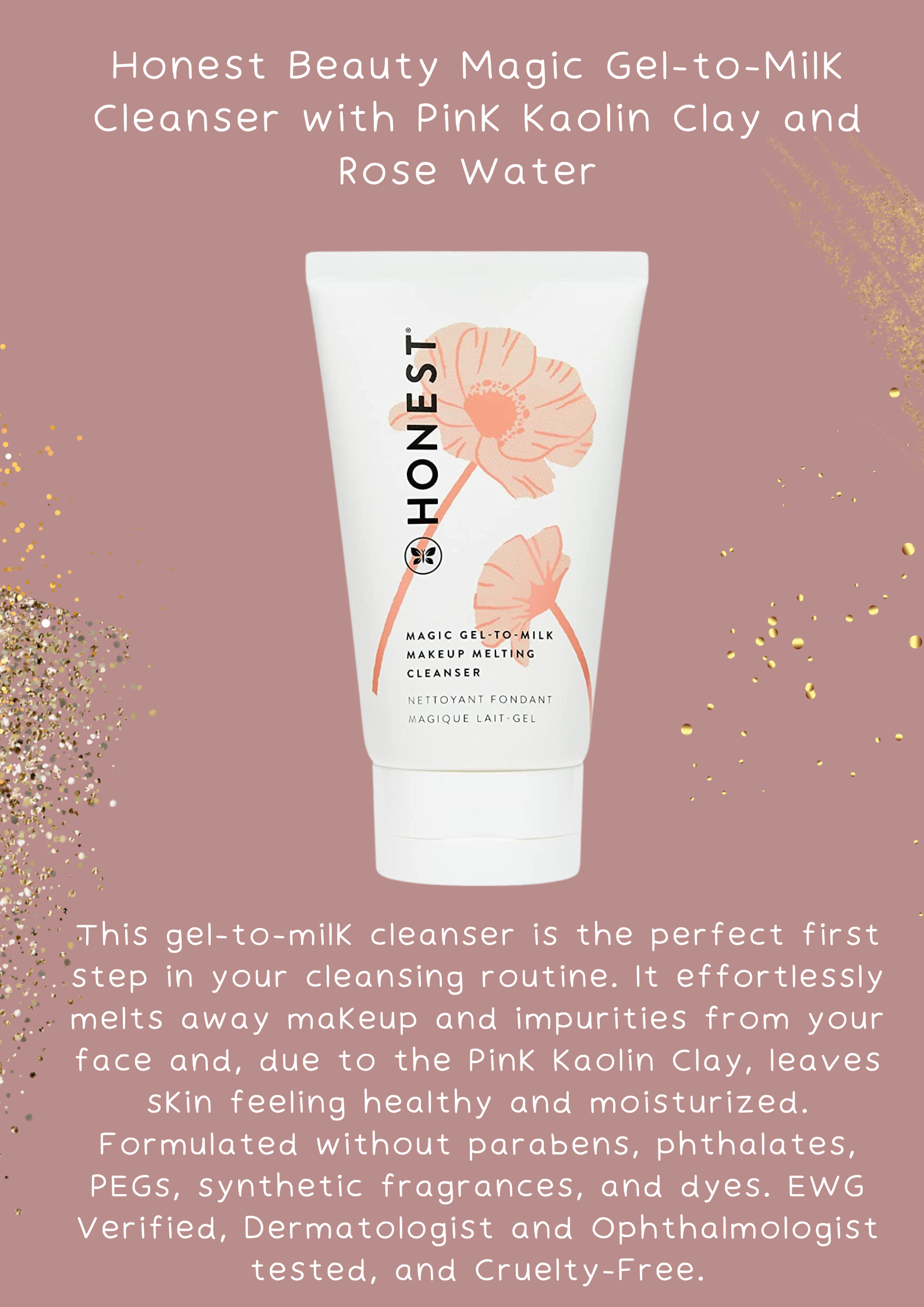

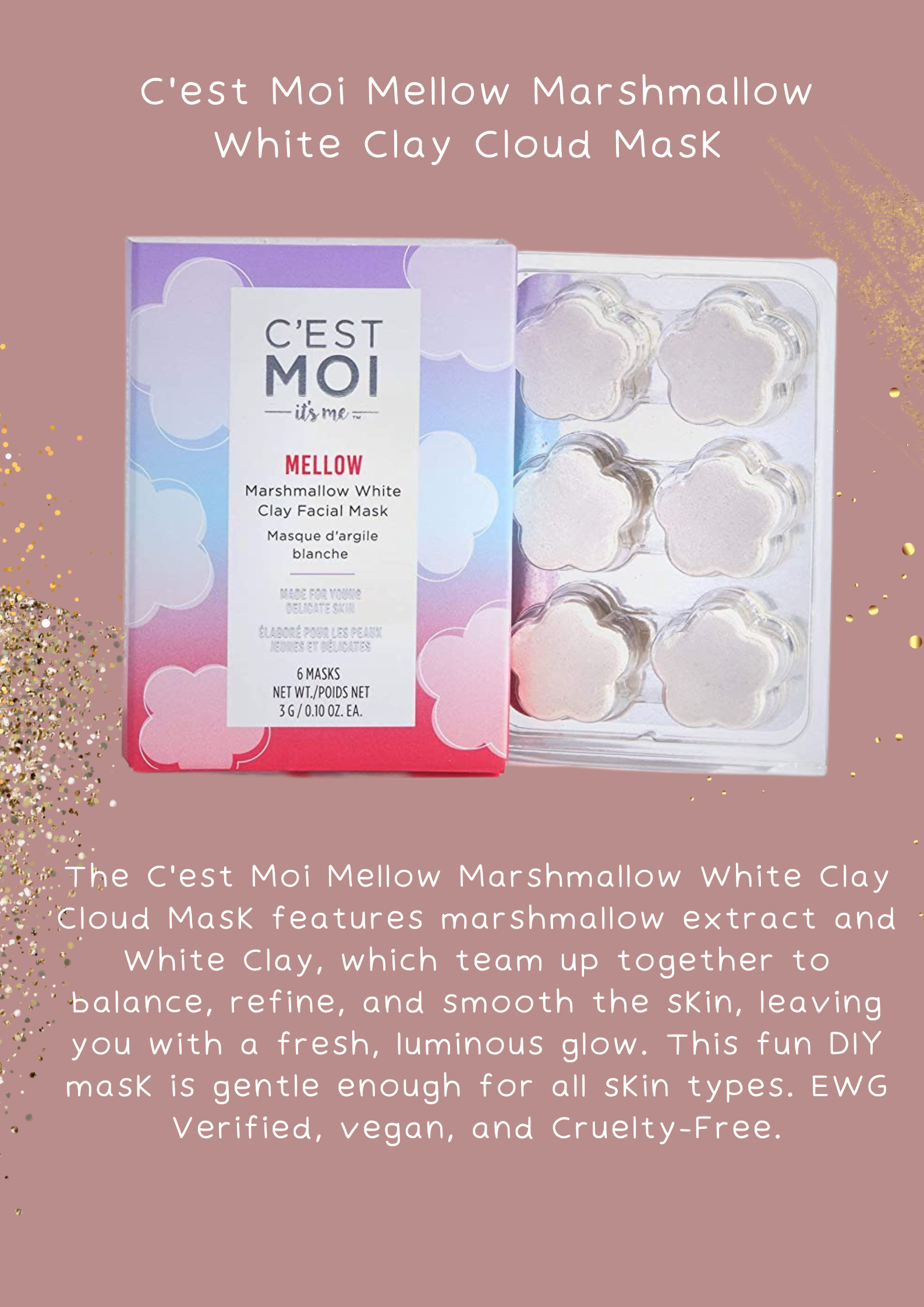
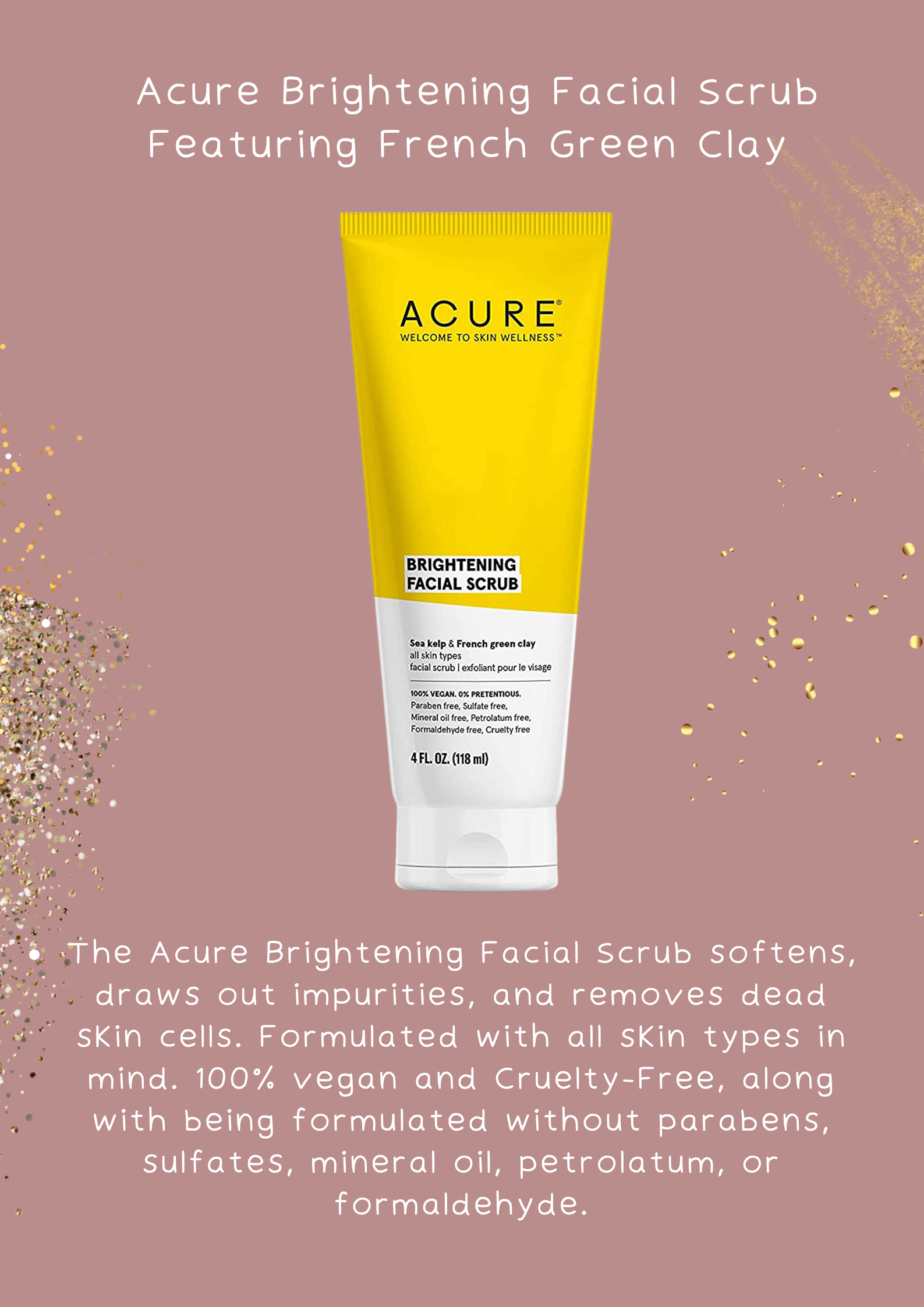

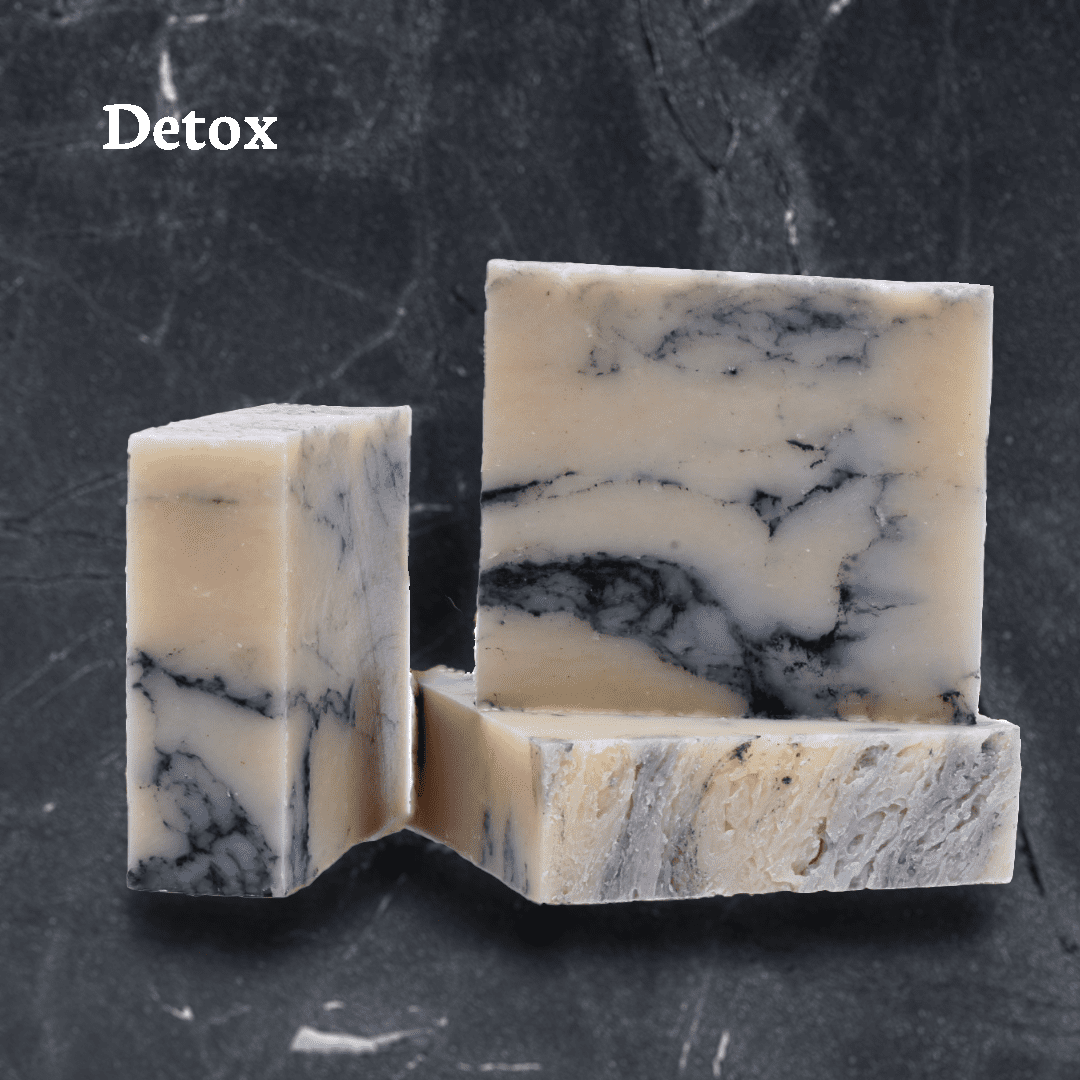 The Humanist Beauty
The Humanist Beauty 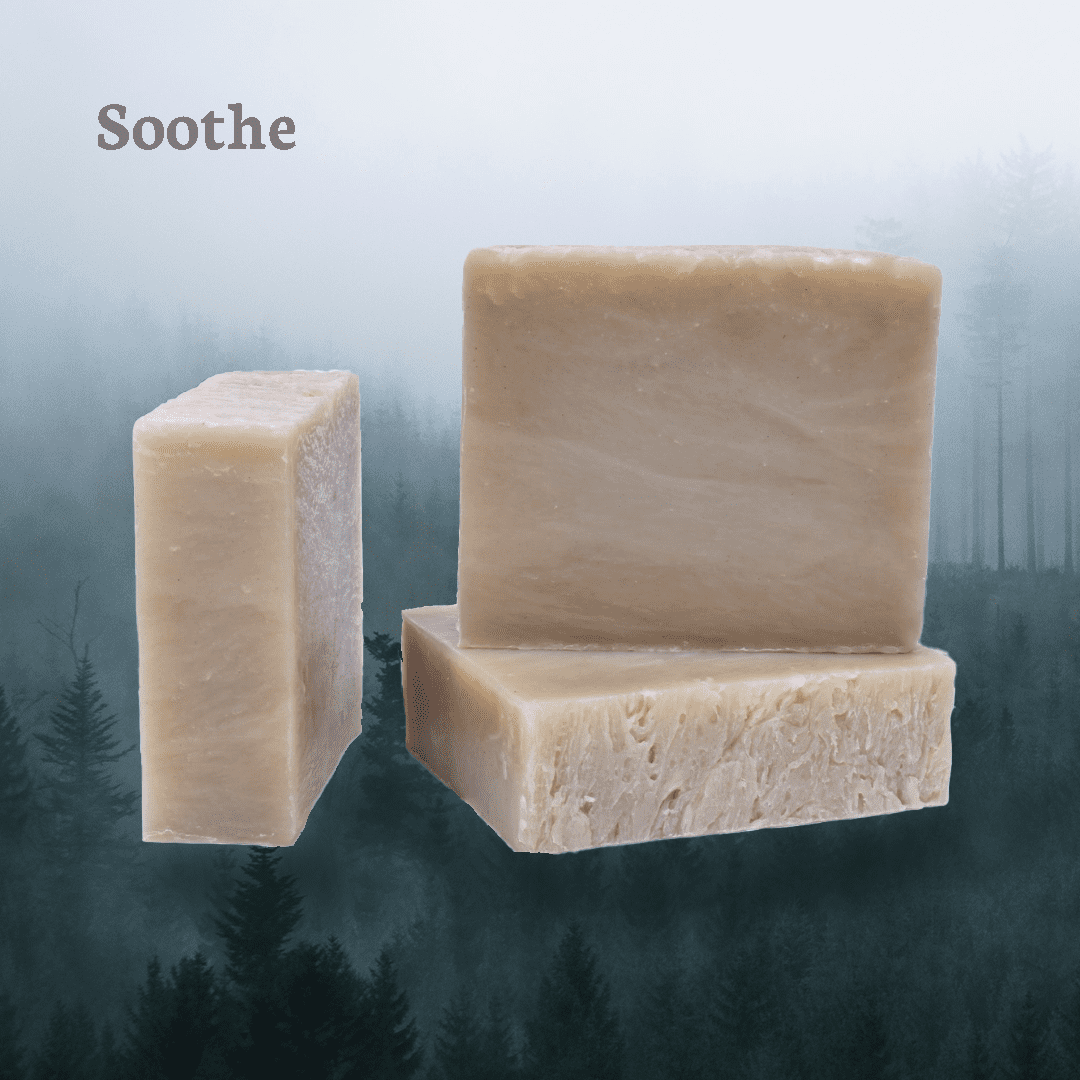
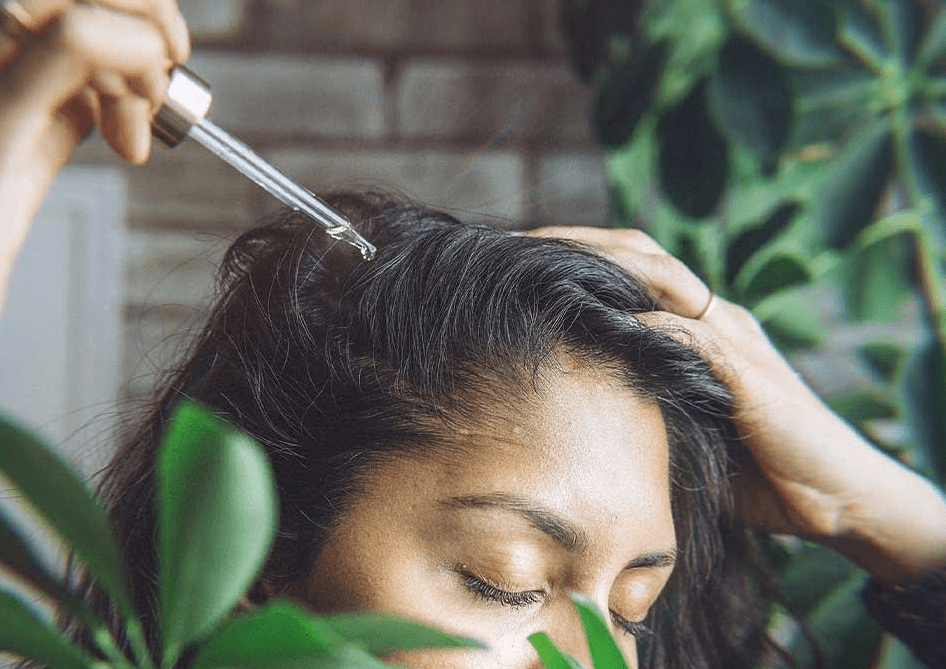
 Source:
Source: 